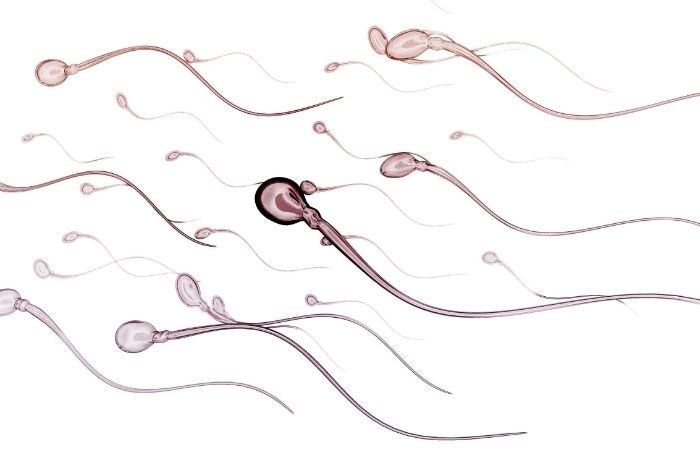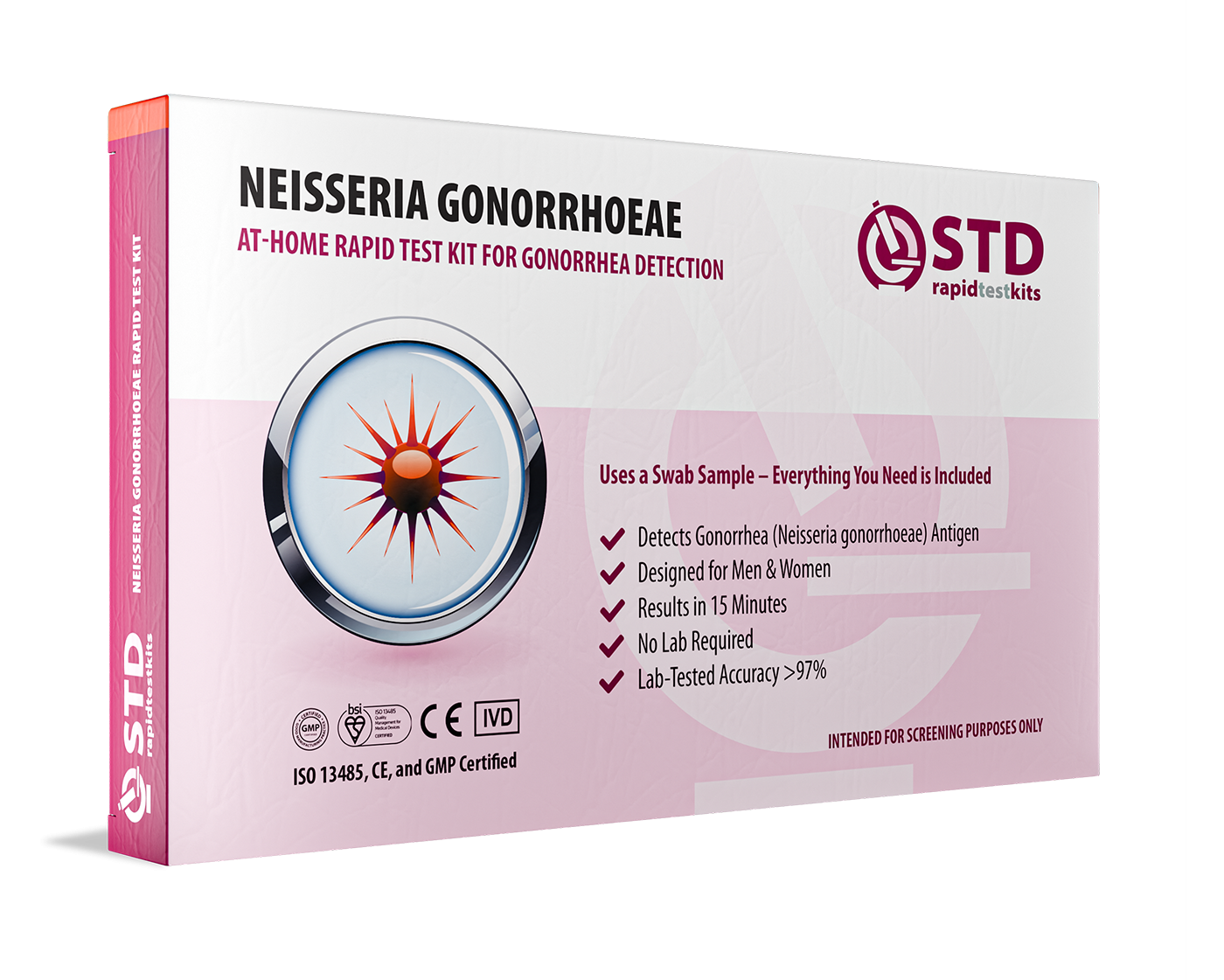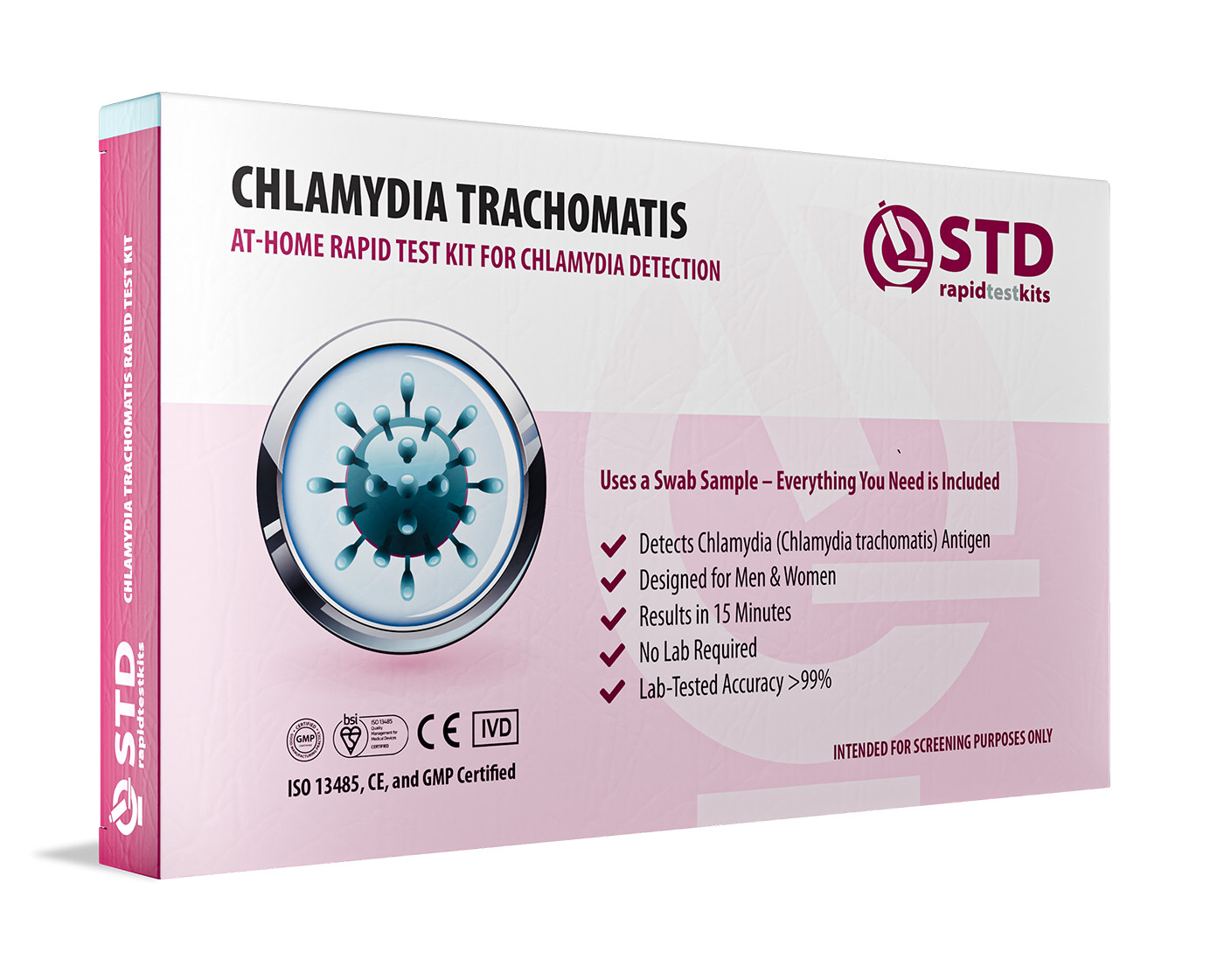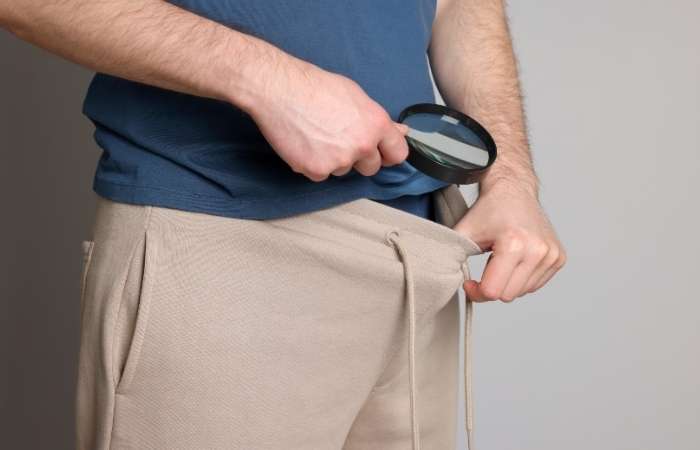Beyond the Antibiotics: Why Treatment Isn't the End
You took the meds. You followed the doctor’s orders. You were told the infection is gone, and maybe it is. But what if something’s still off?
Here’s the harsh truth most guys don’t hear: curing an STD doesn’t always fix the harm it caused. Chlamydia, gonorrhea, and other STIs can leave damage behind even after treatment, especially if they were in your system for a while before diagnosis.
Infections that go undetected for weeks or months can cause:
- Inflammation in the epididymis or testes (epididymitis, orchitis)
- Scar tissue that blocks sperm from traveling properly
- Decreased sperm motility or DNA fragmentation
Think of it like a fire: antibiotics put out the flames, but the structural damage might still be there.

People are also reading: Antibiotics Might Not Be Enough: The Race for a Chlamydia Shot
Sperm Damage: What STDs Can Leave Behind
Sperm is surprisingly resilient, but it’s not invincible. Even a single untreated STD can disrupt the entire reproductive system.
According to a 2021 PubMed study, men with chlamydia-related inflammation saw decreased sperm counts, lower motility, and higher DNA fragmentation rates, even after treatment. Recovery varied based on how long the infection was active.
Here’s how it breaks down:
- Chlamydia: Can reduce sperm motility and increase abnormal forms due to epididymal inflammation
- Gonorrhea: Often leads to urethral scarring or obstructive azoospermia (no sperm present)
- Mycoplasma or ureaplasma: May disrupt seminal plasma or sperm membrane integrity
Even men with no symptoms during infection can face fertility issues later on, because the damage happens internally, not externally.
“But I Feel Fine Now.” Why Symptoms Aren’t the Whole Story
It’s common to assume that no symptoms = no problem. That’s dangerous thinking when it comes to post-STD fertility.
Men often clear the infection but never follow up. Meanwhile, their partners may struggle to get pregnant, or they’ll discover sperm issues only during fertility testing.
The problem? Silent STDs often leave silent damage. That includes:
- Scarred vas deferens (sperm highways)
- Compromised sperm DNA from inflammation
- Subtle hormone shifts affecting testosterone production
Getting treated is critical. But testing your fertility afterward? That’s the part most people skip, and it’s where lasting issues often hide.
Check Your STD Status in Minutes
Test at Home with RemediumGonorrhea Test Kit

 For Men & Women
For Men & Women Results in Minutes
Results in Minutes No Lab Needed
No Lab Needed Private & Discreet
Private & DiscreetOrder Now $33.99 $49.00
How Long Does It Take Sperm to Bounce Back?
The full sperm development cycle takes about 64 to 72 days. That means even after the infection is gone, it takes your body 2–3 months to fully produce a new batch of sperm.
Recovery time depends on:
- How long the STD was active
- Whether you had inflammation in the epididymis or testes
- Age and baseline sperm health
- Overall immune and hormonal function
In one study published in the Indian Journal of Sexually Transmitted Diseases, men treated for chlamydia saw partial recovery of sperm count and motility within 3–6 months, especially when paired with antioxidants and lifestyle changes.
What Happens During a Post-Treatment Fertility Check?
Wondering if your body bounced back? It’s time to test, not guess.
Here’s what a typical post-STD fertility check includes:
- Semen Analysis: Measures sperm count, movement (motility), shape (morphology), and volume
- Sperm DNA Fragmentation Test: Detects microscopic breaks in sperm DNA, often caused by infection or inflammation
- Hormone Panel: Assesses testosterone, FSH, and LH levels for hormonal impact
- Repeat STD Screening: Ensures no lingering or recurrent infections
Not ready to book a clinic visit? A 6-in-1 STD At-Home Rapid Test Kit offers a lab-accurate option from home, and can help you rule out silent infections before investing in expensive fertility diagnostics.
Emotional Whiplash: When Treatment Doesn’t Equal Closure
For many men, getting treated feels like the end of the road. You followed the protocol, took your pills, and moved on. But then… nothing. No pregnancy. A partner’s rising frustration. A fertility test that throws everything into question.
The emotional fallout of post-STD fertility issues can hit harder than the infection itself. Especially if:
- You had no symptoms and didn’t know you were infected
- You unintentionally exposed a partner
- You’re struggling with guilt, shame, or regret
It’s normal to feel betrayed by your body, by your past, and by a healthcare system that never explained all this to you. The key now is to shift the focus from blame to action. Because there’s a lot you can still do.
Case Study: “I Treated It… But I Still Couldn’t Conceive.”
DeShawn, 34, had a chlamydia infection in his 20s. No symptoms. Took antibiotics. Never thought about it again, until he and his partner started trying to have a baby a decade later.
“We did everything right. Ovulation tracking, vitamins, all of it. After a year, I finally did a semen test. My count was low, but worse, my sperm wasn’t moving right.”
Doctors suspected post-infectious epididymitis. His vas deferens had scarring from the earlier infection, never diagnosed at the time. DeShawn and his partner ultimately conceived via IVF with ICSI, but not without years of frustration, emotional strain, and surprise medical bills.
His story isn’t rare. It’s just rarely talked about.

People are also reading: How Long Can You Have an STD Without Knowing?
Rebuilding Fertility: What Actually Helps?
Good news: sperm can regenerate. And even if damage has occurred, many men improve their fertility with the right approach. Here’s what that looks like:
- Wait 3–6 months post-treatment: Let your body rebuild sperm with a full spermatogenesis cycle
- Use antioxidants: Supplements like CoQ10, Vitamin C, and zinc support sperm DNA repair
- Reduce inflammation: Avoid smoking, excess alcohol, and processed foods that increase oxidative stress
- Exercise moderately: Increases testosterone and improves circulation, but don’t overtrain
- Get retested: A follow-up semen analysis shows if your numbers are trending up or stuck
Some clinics also offer sperm-boosting protocols that include:
- Testosterone-supportive therapy (not replacement)
- Clomiphene citrate or HCG for low sperm count
- Advanced antioxidant blends targeted for sperm quality
It’s not just about “having sperm.” It’s about having the healthiest sperm you can, especially after an infection.
Don’t Skip This: The Post-STD Fertility Test
You’ve had the STD. You’ve had the treatment. Now it’s time for the final part of the equation: testing your fertility.
Most doctors recommend waiting 90 days after treatment to assess sperm parameters. That’s when your body has produced a fresh cycle of sperm from scratch. At that point, a semen analysis can reveal whether damage was done, or whether recovery is on track.
Too many men assume treatment equals resolution. But it’s the testing that tells the full story.
How Long Should You Wait Before Trying to Conceive?
It depends on how severe the infection was and what your sperm test shows. But as a general guide:
- After treatment: Wait 3 months before trying
- With a normal sperm test: Green light to start trying
- With low motility or count: Consult a fertility specialist for support
For couples using IUI or IVF, your clinic may require proof of past infection treatment and up-to-date STD results to begin. Getting tested early helps avoid delays.
Check Your STD Status in Minutes
Test at Home with RemediumChlamydia Test Kit

 For Men & Women
For Men & Women Results in Minutes
Results in Minutes No Lab Needed
No Lab Needed Private & Discreet
Private & DiscreetOrder Now $33.99 $49.00
The Invisible Timeline: How Long Is Too Long?
You can’t rewind the clock, but understanding how long an STD was silently impacting your system can tell you a lot about your chances of recovery.
Here’s what most men don’t realize: it’s not just what STD you had, it’s how long you had it. And when symptoms are silent, the damage window can stretch longer than you think.
Research shows that men who carried chlamydia undiagnosed for over 3 months were significantly more likely to show signs of epididymal scarring and reduced sperm motility. With gonorrhea, that window may be even shorter due to the aggressive inflammatory response it triggers in the urethra and reproductive tract.
What this means practically:
- If you caught it early (within weeks): You’re in a much better position for full recovery, especially if you’re under 35.
- If it went undetected for months: Fertility support or testing is smart, even if you feel "fine."
- If you had repeat infections: Each reinfection stacks the risk, especially with Mycoplasma genitalium or ureaplasma, which often fly under the radar in standard STD panels.
Time is tissue. But tissue can often heal with the right support and a little patience.
“But I’m Not the One Who’s Infertile”: Male Fertility Myths That Need to Die
Let’s talk stigma. Too often, when a couple struggles to conceive, all eyes turn to the woman. Her age, her hormones, her uterus. But here’s the raw truth: male factor infertility contributes to over 40% of fertility issues in couples.
And STDs are one of the most preventable, but overlooked, causes. The myths we hear over and over:
- “I had no symptoms, so I’m fine.”
- “She got tested, so we’re good.”
- “If I can ejaculate, I’m fertile.”
All wrong. Sperm can be low-count, low-quality, or genetically damaged even when everything else seems normal. That’s why a post-STD semen analysis is not optional;it’s essential.
One 2022 study from the Journal of Andrology showed that men with a history of untreated chlamydia had up to a 60% higher rate of DNA fragmentation in their sperm, even years after the infection was cleared. That kind of cellular damage doesn’t show up on the outside.
Fertility is a couple’s issue, but it’s a man’s health issue too. And it’s time we stopped pretending otherwise.

People are also reading: When Chlamydia Becomes a Relationship Issue
Future-Proofing Your Fertility: What to Do Before It Becomes a Problem
You don’t need to be trying for a baby to start protecting your fertility. In fact, the earlier you test, supplement, and adjust, the more control you have over your reproductive future.
So if you’re reading this and thinking, “I’m not trying to have kids yet, does this even apply to me?” the answer is yes. Especially if you’ve had a past STD, even one that was “treated and done.”
Here’s what future-proofing can look like:
- Baseline semen analysis: Know where your numbers stand today.
- Repeat STD screening every 6–12 months if sexually active with new partners.
- Antioxidant support (CoQ10, L-carnitine, zinc, selenium) to keep sperm resilient.
- Hormone check-ins: Especially if you’ve had testicular pain or swelling post-infection.
- Lifestyle alignment: Sleep, stress, hydration, and moderate exercise go further than most guys think.
And yes, you can do most of this from home. Tools like the 6-in-1 STD At-Home Rapid Test Kit and fertility-focused sperm tests make it easier than ever to stay informed, without awkward clinic visits or surprise lab fees.
Because when it comes to fertility, knowledge isn’t just power. It’s protection.
FAQ
1. Can I still be infertile after STD treatment?
Yes. While treatment clears the infection, it may not reverse damage to sperm or reproductive tissues, especially if the STD went untreated for a while.
2. How long should I wait after treatment to check my sperm?
Wait at least 2–3 months after treatment. That’s how long it takes for a full new cycle of sperm to be produced.
3. Will my sperm return to normal after chlamydia or gonorrhea?
In many cases, yes, especially if caught early. But some men may have lingering issues and need lifestyle changes or fertility support.
4. What test shows if an STD affected my fertility?
A semen analysis is the first step. It shows sperm count, motility, and quality. DNA fragmentation testing may be needed too.
5. Do I need to test again even if I felt fine after treatment?
Yes. Silent damage can occur without symptoms. Testing is the only way to know your reproductive health status.
6. Can I take supplements to help my sperm recover?
Yes. Antioxidants like CoQ10, zinc, and Vitamin C have been shown to support sperm recovery post-infection.
7. Should I tell my partner about a past STD if we’re TTC?
Yes. Open communication and shared testing help both partners feel empowered and supported during the process.
8. Can STDs cause hormone problems in men?
Sometimes. Infections that inflame the testicles may affect testosterone production. A hormone panel can help diagnose this.
9. Is IVF still possible if sperm is damaged?
Yes. Treatments like ICSI can assist even in cases of low count or motility. But earlier testing often means better options.
10. Do I need another STD test before fertility treatment?
Yes. Most fertility clinics require up-to-date STD screening before IUI or IVF procedures.
You Deserve Clarity
Getting treated was the right first step. But treatment isn’t the same as repair.
Silent STDs like chlamydia and gonorrhea often leave invisible damage: inflamed tubes, scarred tissue, and compromised sperm. That’s not your fault, but it is your responsibility now to check in with your body and your future.
Fertility doesn’t have to be a mystery. And recovery isn’t just possible; it’s powerful.
Whether you’re weeks post-treatment or years past exposure, it’s never too late to test, learn, and take control. Because your reproductive health is more than just being STD-free, it’s about being future-ready.
Sources
1. HIV, HPV and Chlamydia trachomatis: Impacts on Male Fertility – PMC
2. Are STIs Associated with Male Infertility? – PMC
3. Medical News Today – Male Fertility Damaged by Chlamydia & How Treatment Improves Sperm Quality
5. VolusonClub – Fertility and STIs: What Patients Should Know About Recovery After Treatment










